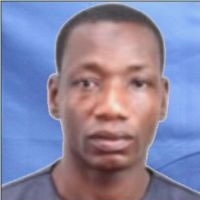Literacy and Education
Literacy
Literacy is defined as the ability to read and write a simple statement in any language with understanding. In Ghana, most people obtain this skill by enrolling in formal educational institutions although some obtain it informally (evening or night classes).
Figure 3.1 shows that about 60.0 percent of the population 11 years and older are not literate in any language. The figure furthers shows that 42.8 percent of the male population, 11 years and older are literate compare to 37.2 percent of the females in Sekyere Afram Plains District.
From the Table 3.9, proportion of the population literate in English Language only is 19.3 percent,17.8 percent are literate in Ghanaian Language only.
About 62.0 percent of the population 11 years and older are literate in English and Ghanaian Language and 0.4 percent literate in English and French. From the table it is obvious that more than half of all the age groups are literate in English and Ghanaian language. Literacy in French language is not pronounced in the district. The Table further shows that 64.7 percent of the male population 11 years and older are literate in both English and Ghanaian language compare to 58.1 percent for the females.
The 2010 PHC collected information on school attendance for those who are currently attending or have attended school in the past and the highest level attended by both sexes. The question on education was collected on the population 3 years and older.
Figure 3.1 shows the school attendance by sex. The Figure indicates that 53.6 percent of the population 3 years and older have never attended school, 29.4 percent are currently attending and 17.0 percent have attended in the past. The proportion of females who have no formal education (55.7%) is higher than that of the males (51.8%).
Table 3.9 indicates that the total population three years and older in the district is 11,857, representing 41.6 percent of the population. The proportion currently attending school is 63.4 percent; and consists of 4,090 males (54.4%) and 3,427 females (45.6%). On the other hand, the population that has attended school in the past is 4,340 (36.6%) and comprises 2,476 males (57.1%) and 1,864 females (42.9%). The table shows that more than half (56.8%) of the population 3 years and older are currently attending primary school, 22.1 percent are in Kindergarten and 9.6 are in JHS/JSS. More males are attending Nursery (8.7%) and JHS/JSS (10.4%) than their female counterparts (8.1%) and (8.5%) respectively. However, more females are attending Kindergarten (24.3%) than the males (20.3%).
Attended in the past
Table 3.10 further shows that 32.7 percent of the population 3 years and older have attended primary school, 28.8 percent have attended JSS, 25.3 percent have attended Middle school and 2.0 percent have attended tertiary education. The proportion of the female who have attended primary school (37.3%) and JSS (31.0%) is higher than the males with (29.2%) and (27.1%) respectively. On the other hand more males have attended Middle (26.9%), SSS (8.6%) and Tertiary (2.4%) than their females who recorded (23.2%, 4.7% and 1.4%) respectively.
Date Created : 11/24/2017 4:06:02 AM




